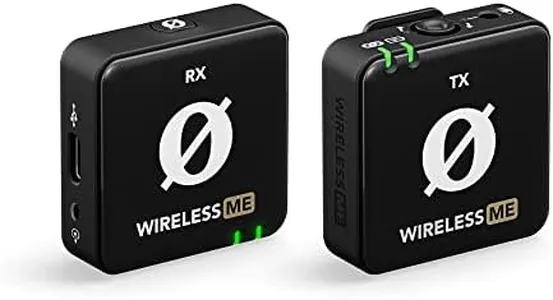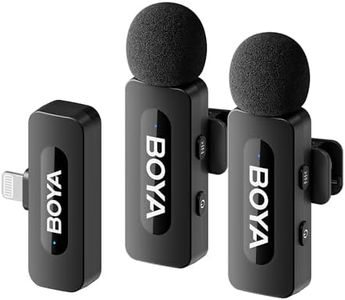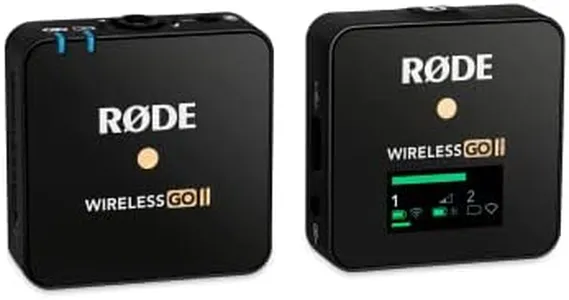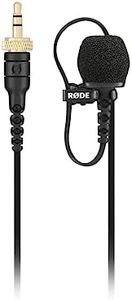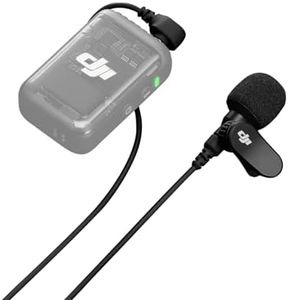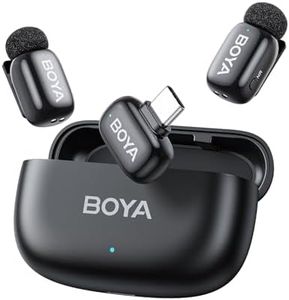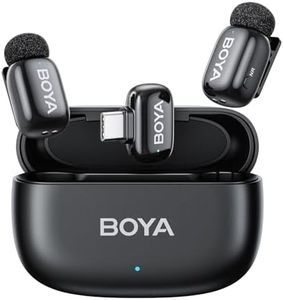We Use CookiesWe use cookies to enhance the security, performance,
functionality and for analytical and promotional activities. By continuing to browse this site you
are agreeing to our privacy policy
10 Best Lavalier Mics
From leading brands and best sellers available on the web.By clicking on a link to a third party's website, log data is shared with that third party.
Buying Guide for the Best Lavalier Mics
Choosing the right lavalier microphone is all about knowing how and where you’ll use it. A lavalier, or lapel mic, is small and clips onto your clothing, making it ideal for presentations, interviews, video production, and theater. The best one for you will depend on your recording environment, your device compatibility, and whether you need to prioritize sound quality, ease of use, or discretion. Understanding the important features will help you make a confident choice that matches your real needs.Connection TypeThis refers to how the lavalier mic connects to your recording device—usually via a wired cable or a wireless transmitter. Wired models plug directly into cameras, smartphones, or recorders, providing reliability and no battery hassles, but can limit your movement. Wireless options use radio transmitters and receivers, letting you move freely and making them great for presenters or performers, but they require batteries and can experience interference. If you’ll be stationary or seated, wired might be perfect. If you’ll be moving around a lot or want a clean look with no cables showing, wireless is likely better suited.
Microphone Pattern (Polar Pattern)A lavalier’s polar pattern describes how it picks up sound from different directions. The most common are omnidirectional, which capture sound equally from all sides, and are best if you want natural voice capture and might move your head. Cardioid or unidirectional mics are more focused and pick up mainly from the front, which is useful in noisy spaces but require more careful placement. Think about your recording location—if it’s quiet and you want ease, omnidirectional is usually safest. If you’re fighting background noise or recording outdoors, a cardioid pattern may be a better match.
CompatibilityDifferent lavalier mics are designed to work with different devices, such as DSLR cameras, smartphones, or professional audio recorders. This depends on the plug type (like 3.5mm TRRS/TRS, XLR) or whether they need special adapters or power. Check that the mic you choose is compatible with your primary recording device to avoid disappointment and extra purchases. The easiest path is to match the mic output to your device’s mic input. If you switch between devices, look for models offering multiple connection options or adapters.
Power RequirementSome lavaliers need a power source, known as 'phantom power' (usually via XLR connections), while others run on small batteries or draw power from the device (plug-in power). Mics that require external power are often used for professional setups and can offer better sound, but need compatible gear. Simpler battery-powered or device-powered mics are often enough for smartphones and vloggers. Identify whether your setup can provide the needed power, or if you want something that works 'out of the box' with your gear.
Cable LengthThe cable length determines how far you can be from your recording device. Short cables (around 1 meter) are tidy and minimize tangling, good for close setups. Longer cables (up to 6 meters or more) offer more flexibility for movement, especially if you want to hide equipment. Think about your recordings: Are you always next to your camera or will you need some leeway? Pick a length that matches your shooting style, but remember longer cables can increase chances of noise or tangling.
Mic Size and DiscreetnessSince lavaliers are worn on clothing, the size of the mic matters if appearance is important to you. Smaller microphones are easier to hide, making them ideal for stage or on-camera work where you don’t want the mic to be seen. Larger lavaliers might offer better sound quality due to bigger elements but can be more visible. Consider your main use — if you’ll be on camera and want the mic to vanish, go for a smaller, more discreet option.
Durability and Build QualityLavalier mics might endure quite a bit of stress from constant handling and clipping onto different outfits. Sturdy construction, reinforced cables, and water resistance are features that help your mic last longer, especially in active or outdoor settings. If you plan to use your mic regularly, it’s worth considering how tough and flexible it is to avoid frequent replacements.


